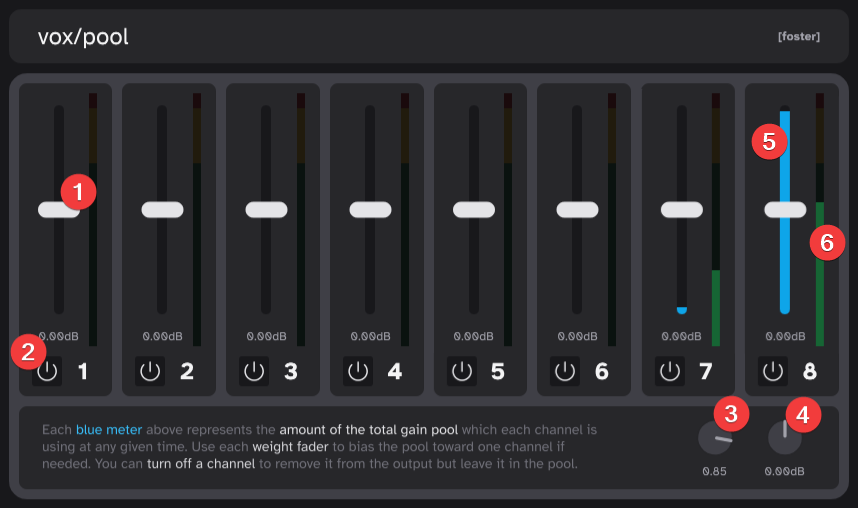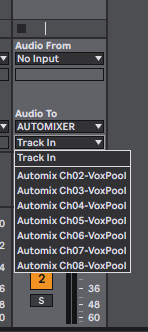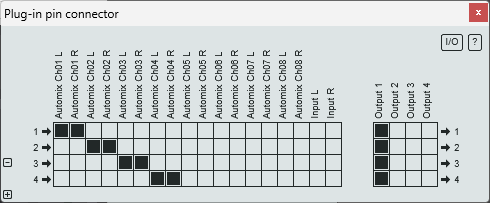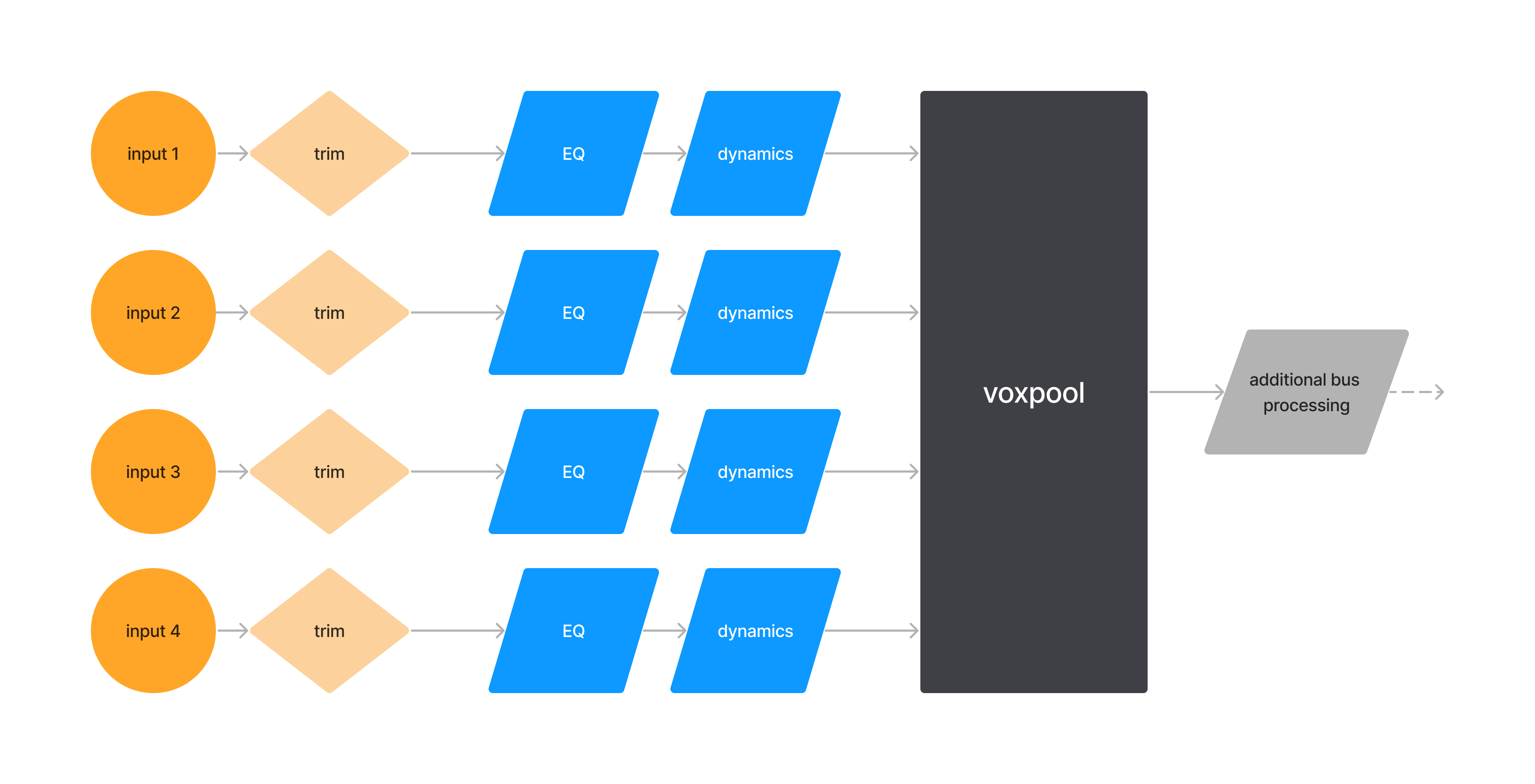-
Notifications
You must be signed in to change notification settings - Fork 0
Home
Voxpool is a gain-pooling automatic mixing plugin for processing multitracked dialogue. It is available in multichannel VST3/AU formats.

Voxpool is an automatic mixing tool that helps with noise reduction, clarity enhancement, and volume leveling of vocal sources, ideal for scenarios involving multiple speakers each using their own mic, particularly when participating in unscripted discussion.
Voxpool uses a relatively common technique in live sound and broadcast workflows called "gain pooling." Input channels share a gain pool, and the total gain for the system can never be greater than 1—all induced volume changes are subtractive.
Voxpool determines how much of the pool to give to each of the channels based on their current behavior, turning down non-speaking inputs to make room for speaking inputs. If multiple inputs begin speaking at the same time, voxpool will attempt to share the gain equally between them, leading to a roughly similar overall volume to when there was only one person talking.
Voxpool introduces no latency, making it ideal for live and broadcast workflows, as well as great for rapid studio processing and real-time monitoring such as on podcasts.
The most important section of voxpool is the fader section, which allows you to control each of the inputs and visualize what the plugin is doing. Let's look at what each of voxpool's controls actually does...

- The weight faders—these faders allow you to bias the pool toward one channel. This is the place to even out inputs so that they all take roughly the same amount of gain when they speak.
- The channel output buttons—these allow you to mute only the output of a channel. This means that it will still have an effect on the gain pool, while being inaudible in the mix. See advanced techniques for more.
- The depth knob—this allows you to globally control the aggressiveness of the gain reduction on non-speaking channels. Values closer to 0 will let more audio through.
- The output gain knob—this adjusts the output level of the entire mixdown.
- The weight meter—this shows the proportion of the gain pool this channel is currently using up.
- The level meter—this shows the input volume of the channel, measured after the weight has been applied.
Voxpool operates as a multichannel VST3 plugin. It presents inputs to your DAW as 8 separate busses to aid with routing workflows.
Many DAWS allow you to route directly from other channels into these busses, for example Ableton:

Other DAWs, such as Reaper, only allow channel-to-channel routing. In that case, you'll need to create a multichannel audio channel, and route each input to one of its own channels. Then, Reaper allows you to route from each of these inputs into one of the plugin's inputs:

Note: While voxpool requests that these inputs be mono, it cannot enforce this, so sometimes you will see a situation like above where each input has a left and right input. The plugin will sum these to mono before processing.
You might also notice that the plugin has 4 outputs here: in the case of a multichannel audio channel, it usually must have the same number of output channels as input channels. To accomodate any and all relevant DAW workflows, voxpool will always output the (mono) output mix to all available plugin outputs.
Since voxpool sums its inputs, it is ideally placed at the final stage of signal flow. For this reason, it's often sensible to think of it like your vocal bus. Additional bus processing effects can be placed after voxpool in the signal chain, but individual channels should be processed before entering the automixer.

One somewhat common technique used with many automixers is the white noise gating technique. To use this, you will need a set of inputs that have reasonably consistent background noise. The concept is simple:
- Route a channel of white noise into voxpool, and turn off its output.
- Adjust its weight so the level comes in louder than the background noise, but safely below the level of dialogue.
- Test with your quietest dialogue to ensure nothing is missing.
Now, whenever all speakers drop out, the white noise will take over the gain pool, effectively removing all actual noise that would normally be somewhat amplified by the automixer while no one is speaking.
It is possible, while not recommended, to mix more than 8 channels using voxpool. The simplest method is to sum a few inputs together, but this of course limits the benefits to some extent. If you choose to do this, here are a few recommendations:
- Try to choose two mics that were physically far apart from each other, to reduce bleed risk.
- Select two speakers who are relatively consistent in their speech, and who are similar in their dynamics to each other.